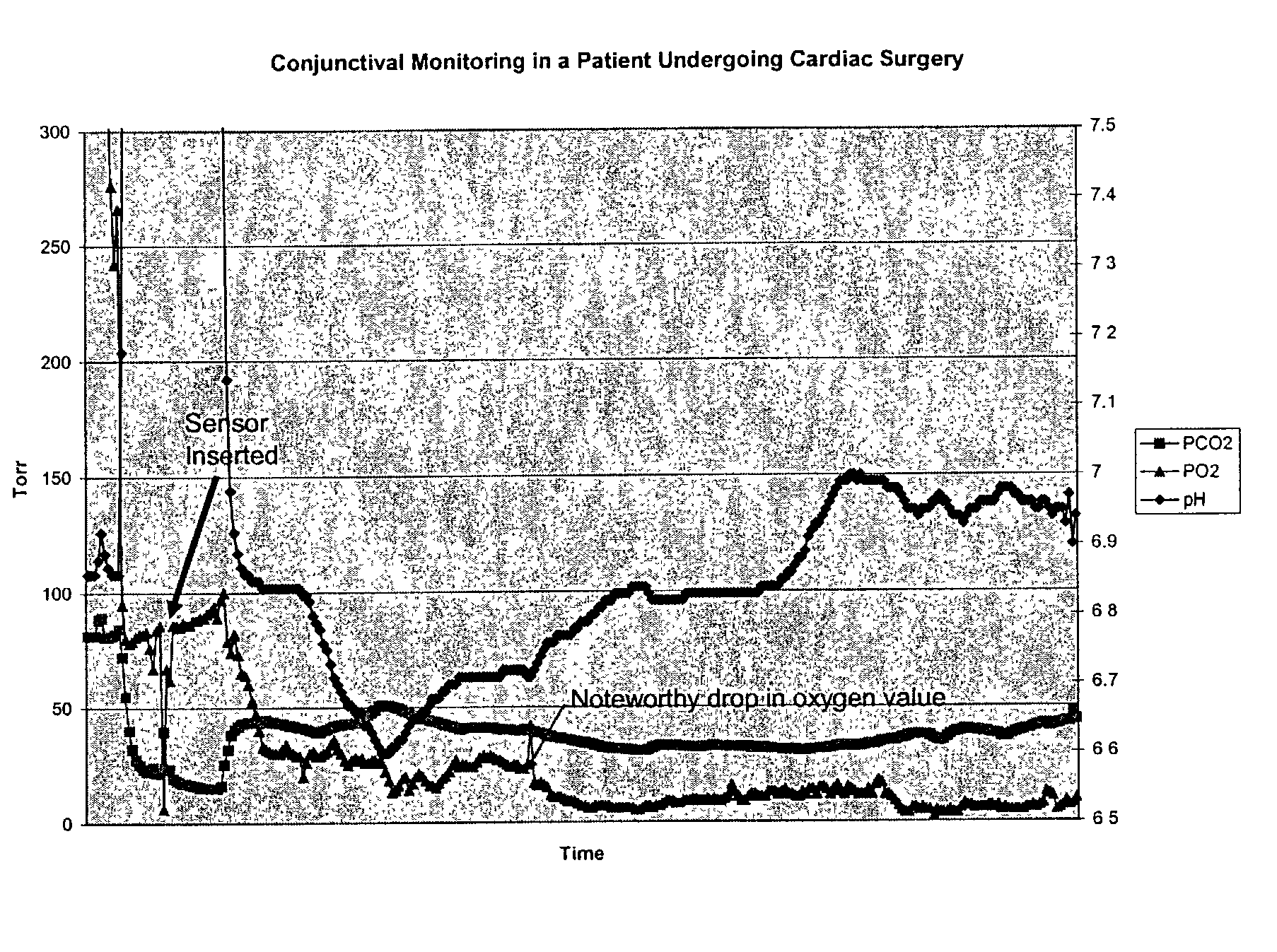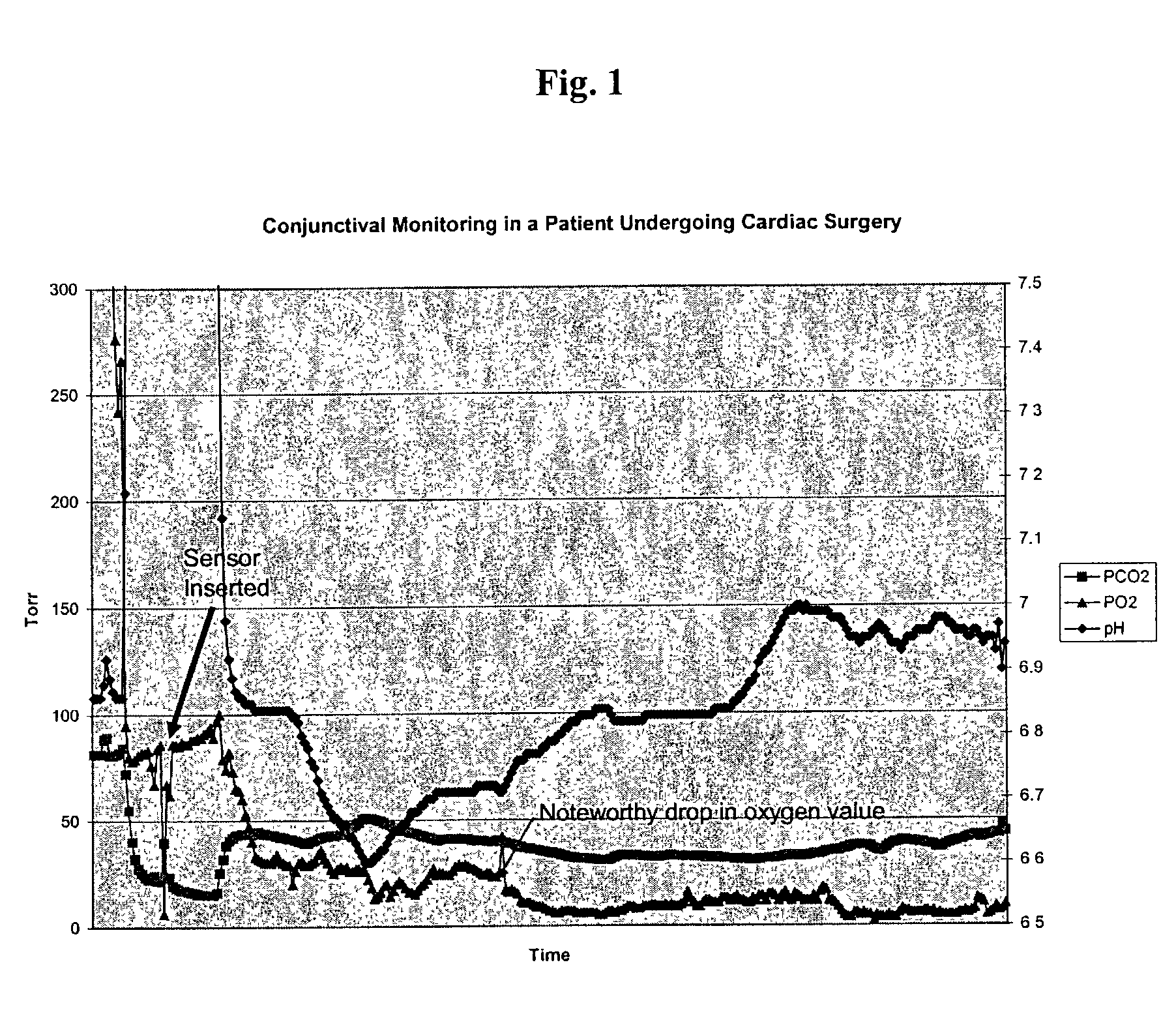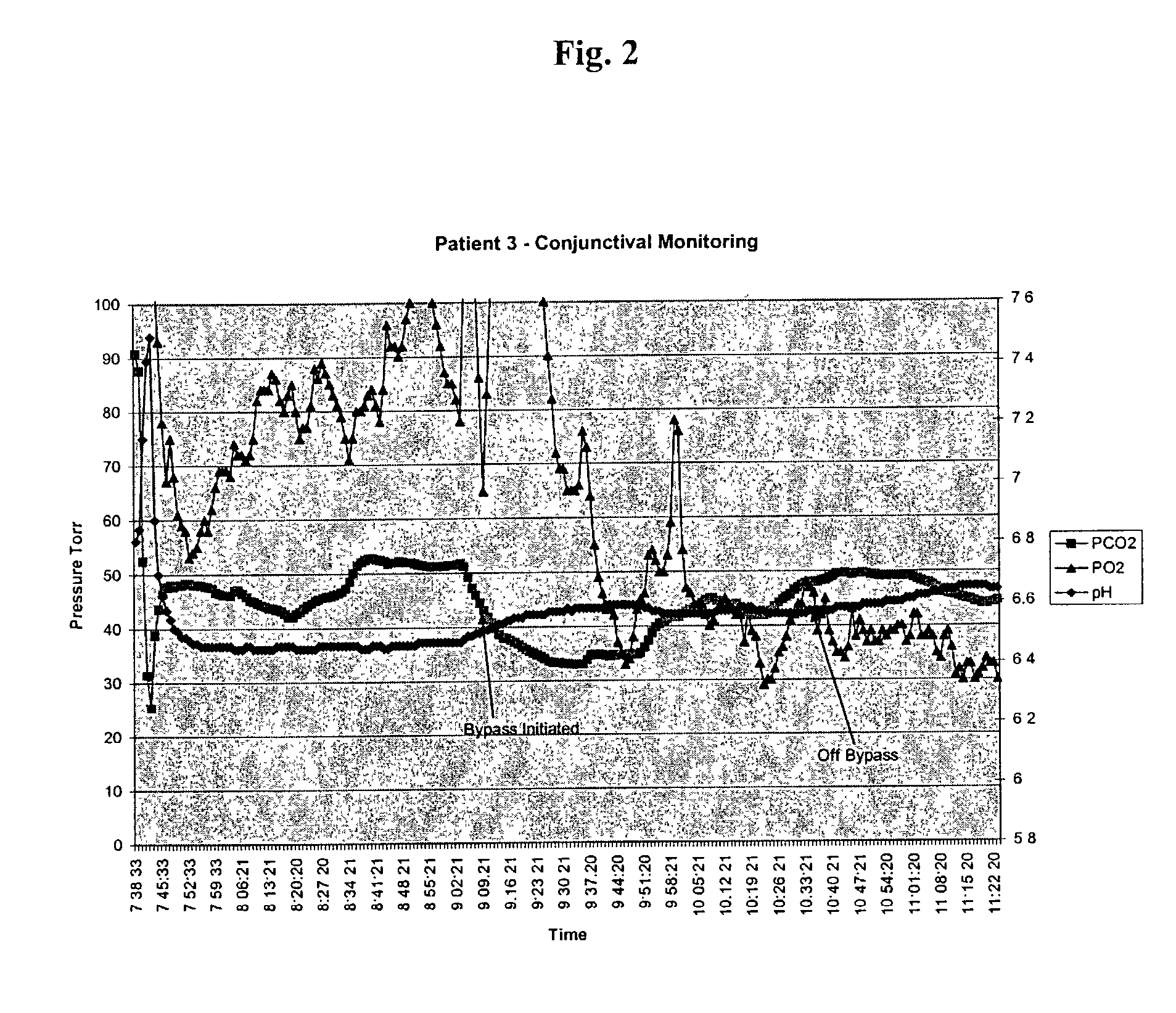Conjunctival monitor
a monitor and conjunctival technology, applied in the field of conjunctival monitors, can solve the problems of large bulky equipment, poor tissue perfusion, permanent damage, etc., and achieve the effect of avoiding permanent damage, avoiding permanent damage, and avoiding permanent damag
- Summary
- Abstract
- Description
- Claims
- Application Information
AI Technical Summary
Benefits of technology
Problems solved by technology
Method used
Image
Examples
example 1
Use of Conjunctival Monitor in Dogs
[0085]As an initial test to determine whether an optical sensor could work in the conjunctiva, tests were performed in animal eyes. A sensor was used that has a heparin-coated, microporous polyethylene sheath around optical fibers for detection of pH, CO2, and O2, as well as a copper / constantin thermocouple for temperature measurement. The sensor had a diameter of approximately 0.5 mm. The sensor and the various constituent sensor fibers were constructed as exemplary sensor fibers described above, with rectangular holes arranged in a helical pattern at the tip of each fiber, where the holes contained the indicator chemistry.
[0086]Initially two dogs that were undergoing experimental placement of a vascular stent had an ocular sensor placed. The optical pH, PO2, PCO2, and temperature sensor two centimeters long was placed in the lower fornix of the eye, in contact with the conjunctiva. We discovered that the sensor accurately read the pH, carbon diox...
example 2
Use of Conjunctival Monitor in Sheep
[0087]In a second test, several pregnant sheep that were undergoing various studies of hypoxia were used. The sensor was placed in the eye as in Example 1. Four sheep were studied and it was found that the sensor was able to monitor for over two hours without difficulty. We discovered that in these situations, where the physiology of the mother was not being manipulated, the values were stable. Again the eyes of the sheep were examined both before and after the study and no damage was noted.
example 3
Use of Conjunctival Monitor in Pigs
[0088]In a third test, we studied several pigs undergoing bleeding experiments in a resuscitation model, to determine whether the sensor was capable of detecting changes in the physiologic milieu. A pig undergoing a 15% blood volume bleed had a sensor placed as above. The sensor monitoring showed that after the bleed the conjunctival tissue had a marked increase in carbon dioxide level and a fall off in oxygen tension. These values did not return to baseline following fluid resuscitation, suggesting that saline resuscitation is not an adequate substitution for blood.
[0089]The sensor also detected changes in pigs undergoing Extra Corporeal Membrane Oxygenation Therapy (ECMO), a form of cardiac bypass which is used in patients with severe cardiac and respiratory failure, when the therapy was interrupted. When the machine was disconnected, the sensor detected the resulting decrease in oxygen level and increase in carbon dioxide.
PUM
 Login to View More
Login to View More Abstract
Description
Claims
Application Information
 Login to View More
Login to View More - R&D
- Intellectual Property
- Life Sciences
- Materials
- Tech Scout
- Unparalleled Data Quality
- Higher Quality Content
- 60% Fewer Hallucinations
Browse by: Latest US Patents, China's latest patents, Technical Efficacy Thesaurus, Application Domain, Technology Topic, Popular Technical Reports.
© 2025 PatSnap. All rights reserved.Legal|Privacy policy|Modern Slavery Act Transparency Statement|Sitemap|About US| Contact US: help@patsnap.com



